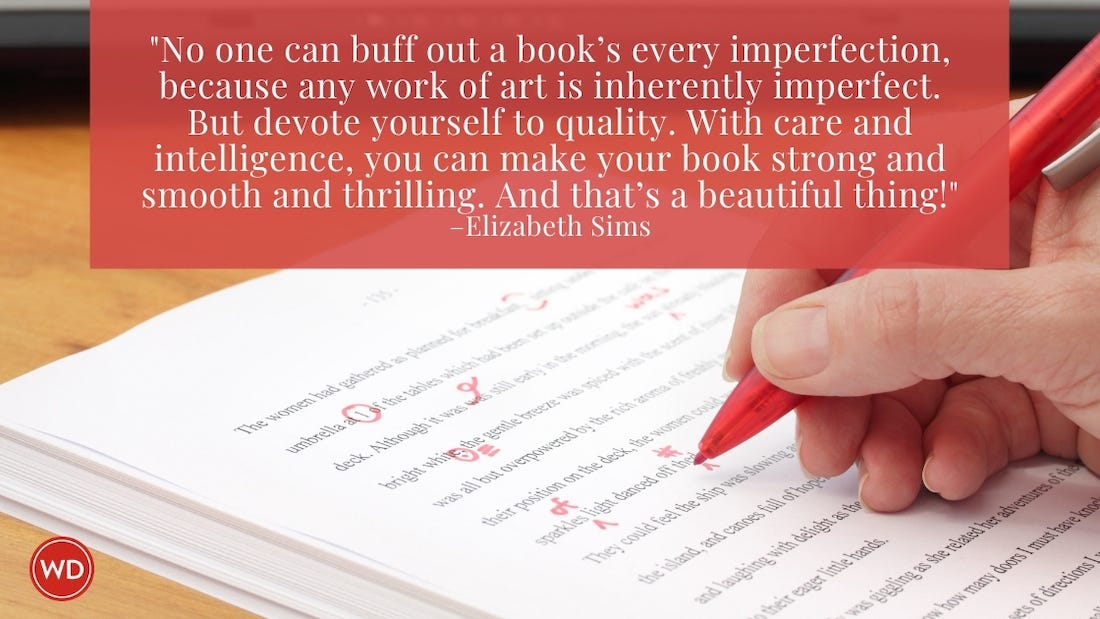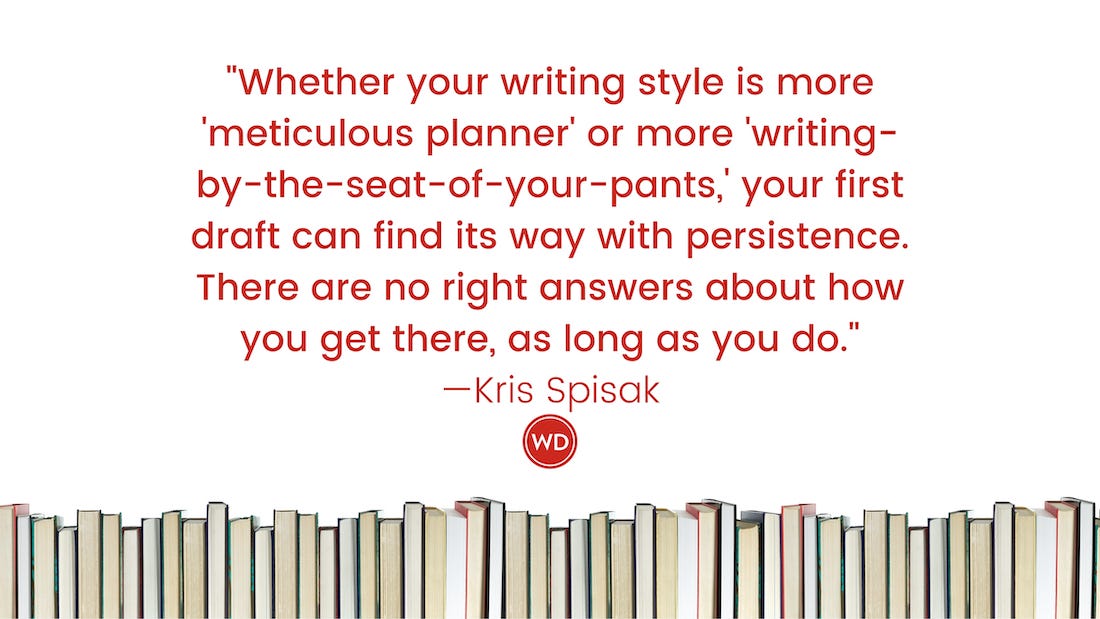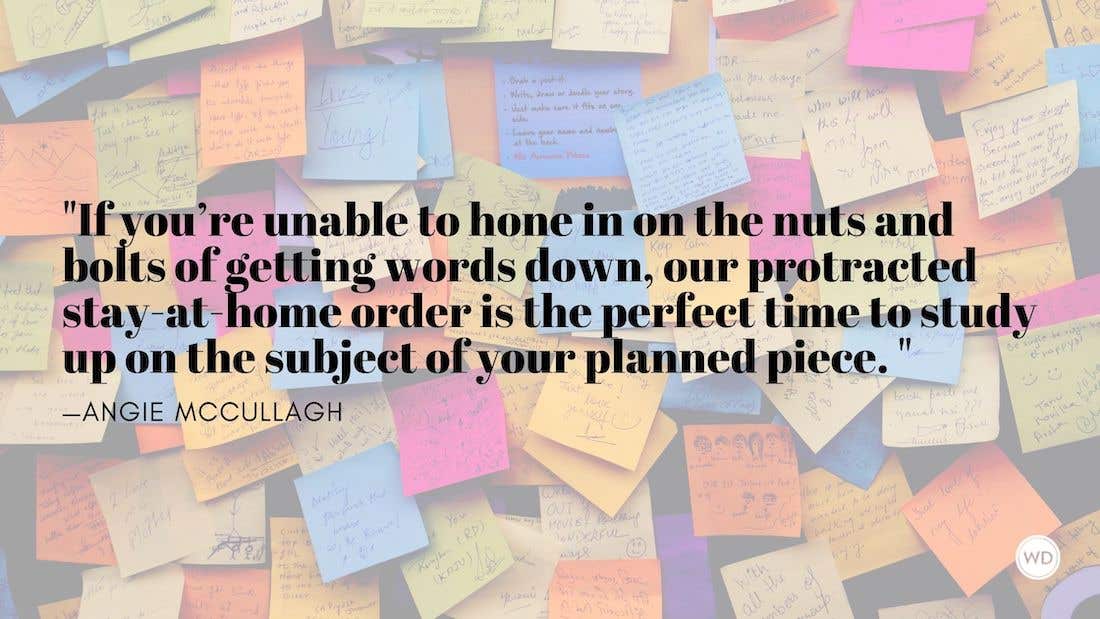Writer’s Workout Excerpt
Excerpt from The Writer’s Workout by Christina Katz CULTIVATE CLARITY When you write something needlessly prolix and convoluted, there’s a reason for it, and that reason is usually a lack…
CULTIVATE CLARITY
When you write something needlessly prolix and convoluted, there’s a reason for it, and that reason is usually a lack of clarity and purpose going on.
—Robert Masello
The reader shouldn’t have to do all the work.
Recently I picked up a magazine and read/skimmed through the articles. I was struck by the clarity and excellence of one of the articles in relation to the rambling I-don’t-know-what that was passing as another article.
As I was pondering how the editor could have allowed one into print while the other was clearly so much higher quality, I realized something. There are two kinds of writing: good, clear writing that communicates fully, compellingly, and well—and drafts.
And drafts should never be published as final work.
So let’s explore what clear writing is and isn’t, so you will know when your drafts are done.
Clear Writing
• The idea of the piece is clearly stated and set up in the title and subtitle.
• The idea is introduced by the lead briefly and in a way that makes me want to keep reading.
• The piece is made up of both short and medium sentence lengths.
• Quotations throughout the piece are set up, brief, and relevant.
• Sentences almost never begin with it.
• The writer stays out of the way and serves the story.
• The structure of the piece is consistent and has a rhythm.
Confused Writing
• The idea of the piece is unclear, fuzzy, or too multifaceted.
• The idea is introduced by a long lead that rambles, waxes poetic, and becomes borderline self-indulgent.
• The piece is made up of long run-on sentences followed by long run-on sentences.
• Quotations throughout the piece feel jammed in, go on too long, and don’t jibe with the rest of the piece.
• Sentence after sentence begins with the word it, even the beginnings of paragraphs.
• The writer can’t get out of the way and just say what she needs to say.
• The writer keeps pointing the story back at himself.
• The structure of the piece is nonexistent, free-form, or detracts from the piece.
INVENTORY IDEAS
Many writers make elaborate files, spending hours cross-indexing and making notations from these articles. Others let newspapers and magazines stack up to the ceiling and then waste hours burrowing through them trying to find a specific issue. I tend to fall somewhere in between.
—Elaine Fantle Shimberg
Train your mind to keep tabs on your best ideas and you will eventually use them all. If you are having trouble keeping track of all your ideas because they are popping up all over the place, start a collection method for every worthwhile snippet, scrap, and thought bubble.
Create an idea inventory where you list all your ideas in one place. This way when you are stumped for a new piece of writing, you can revisit your list or take a few minutes to update it and you will be refreshed and ready to write.
Keep similar topic writing clustered together. You can use folders on your computer for storing groups of docs. Make the doc titles the same as what they contain and save yourself headaches when you are looking for specific content later.
Pieces that don’t end up finished can also be inventoried. You’ll increase the chance of finishing your work tenfold by printing unfinished work and keeping it handy. Print out your in-progress docs and put them in an in-progress folder so you can keep track of unfinished work you intend to finish later.
Play with old ideas.Keep your best ideas in lists that you either handwrite or type up. Whatever works for you. If you covered part of a topic, you might cover it more fully later. If you have covered a topic thoroughly, you might break out and expand a part of the idea.
You are going to be writing for a long time. Over the course of your lifetime, you will have realized hundreds of ideas. Your most compelling ideas will likely stay compelling for you. Years from now, they will still have the same stuff that attracted you to them in the first place.
WRITE RICHLY
When you’re writing nonfiction, there’s no use getting into a writing schedule until you’ve done the [research] and you have the material.
—Tom Wolfe
Beginning writers often don’t understand that writing richly is part of the job description. Or they think writing richly takes so long initially they feel like they will never be able to write quickly enough to make the investment of time worthwhile.
So if you want to compete, you must write richly at the outset of your career and keep striving to write better and better as your career progresses.
Salable writing doesn’t usually happen in one fell swoop. Salable writing is well-researched and carefully crafted. You have to care about the details. If you don’t care about the details, your reader isn’t going to care about the writing.
When good ideas come flooding in, you will want to get the gist of your idea sketched or outlined while it’s fresh in your mind. Of course you should get it on the page. And then later, you can come back and add:
• The perfect seasonal hook
• The most timely statistics
• The newly revealed facts
• The most penetrating definitions
• The most revealing anecdotes
• The most appropriate quotes
• The most respected experts
• The most helpful references
• The most illustrative links
• The most necessary details, tools, and resources
Notice in chapter twenty-four, I suggested that you add stats, facts, quotes, etc., but I wasn’t pressing you to make sure you dug up the most recent facts or the most appropriate quotes. A beginning writer, who is composing work for lower-paying pubs, can often get away with beginner-level writing.
But as you progress in your career, it’s up to you to push yourself to write better and better all the time. Try to include the most relevant, revealing, timely information in your writing, not just whatever pops up at the top of the Internet search or the quote from the first person who gets back to you.
The better you get at enriching your final drafts, the better you will be able to compete.
SERVE UP WORDS
A good cover letter should be concise, businesslike, and informative. It should give an editor all the pertinent facts—and nothing more.
—Scott Edelstein
Publication of your work by someone who can share it with a larger audience is why you go to all the trouble of packaging your words up to make the best possible impression.
Okay, so an editor receives a cover letter from you. Presumably because:
• She might publish your work.
• You know she is open to receiving cover letters with submissions she might publish.
• You are hoping she will write right back and say, “Sold!”
• You are hoping that she will pay you for your polished writing.
And if she is on the receiving end of your best work, and you present it to her in a professional manner, and she has a budget to pay writers, if all of these aspects of the equation are in place, she just might say, “Yes!”
So what do you have to lose? Nuthin’, that’s what.
The most important factor is to keep your cover letters simple. If all you do in your cover letter is answer these questions, you won’t be able to help but write a good one:
• Why are you writing? If you want to get an editor’s attention, connect with him and say something appreciative about his publication. Tell him something specific you appreciate about the work he is doing.
• What are you offering? You’ve got her attention now, but not for long. So can you quickly give her the 4-1-1 on how your words will hook her readers’ attention? She needs to be able to read this cover letter in about thirty seconds. If you come up with something that’s a perfect fit in topic and form with what she already publishes, you will have a fighting chance.
• Who are you? Can you seal his interest and turn this exchange into an offer? Share only your most impressive credentials. End on a strong note that ties you in with the topic you are writing about and you just might be the writer with the exact kind of writing he needs.
About the Book
Find out more ways to cross train your writing career in The Writer’s Workout by Christina Katz.









